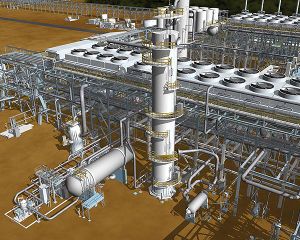Difference between revisions of "Piping Engineering"
Jump to navigation
Jump to search
| Line 1: | Line 1: | ||
[[Category:Engineering, Consulting]]{{Knoppen}} | [[Category:Engineering, Consulting]]{{Knoppen}} | ||
[[File: | [[File:PIPING ENGINEERING.jpg|thumb|right|Piping Engineering]] | ||
'''Engineering''' is the | '''Piping Engineering''' is structured to raise the level of expertise in piping design and to improve the competitiveness in the global markets. This course provides various piping system designs, development skills and knowledge of current trends of plant layout. | ||
Piping Engineers is a vital member of engineering teams and numerous vacancies are available in the areas of design, layout, analysis, construction, operation and maintenance of piping systems. With the broad technical background piping engineers can prepare themselves for various vacancies in material control, estimating, field engineering, and technical sales and support in refinery, petrochemical, chemical Industry. | |||
== | ==Objectives== | ||
* To identify the basic vocabulary and to introduce the major concepts of piping system design | |||
* | * To provide and understand the basic piping requirements for design as per the international codes and standards | ||
* To understand how to design cost effective new installation | |||
* | * To understand how to create cost effective design in trouble shooting as well as while improving existing piping system. | ||
* | |||
Latest revision as of 02:48, 7 January 2013
Piping Engineering is structured to raise the level of expertise in piping design and to improve the competitiveness in the global markets. This course provides various piping system designs, development skills and knowledge of current trends of plant layout.
Piping Engineers is a vital member of engineering teams and numerous vacancies are available in the areas of design, layout, analysis, construction, operation and maintenance of piping systems. With the broad technical background piping engineers can prepare themselves for various vacancies in material control, estimating, field engineering, and technical sales and support in refinery, petrochemical, chemical Industry.
Objectives
- To identify the basic vocabulary and to introduce the major concepts of piping system design
- To provide and understand the basic piping requirements for design as per the international codes and standards
- To understand how to design cost effective new installation
- To understand how to create cost effective design in trouble shooting as well as while improving existing piping system.
